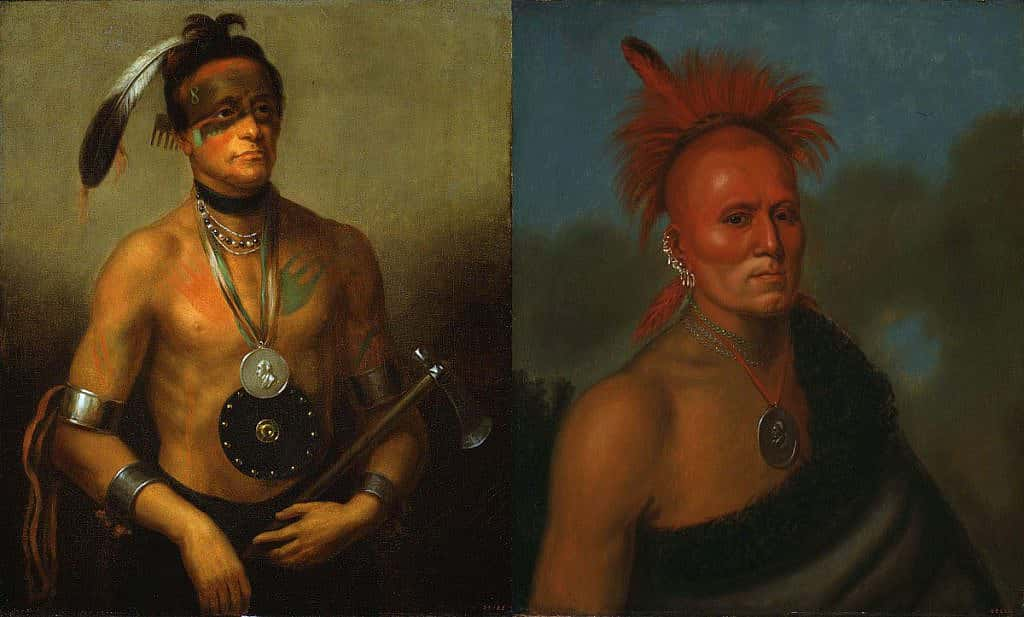Henry Inman’s “Hoo-Wan-Ne-Ka” and “Shar-I-Tar-Ish”
Henry Inman, Hoo-Wan-Ne-Ka (Little Elk), 21.95.1 and Shar-I-Tar-Ish, 21.95.2
Henry Inman (1801–1846). Hoo-Wan-Ne-Ka (Little Elk), 1832. Oil on canvas, 30.4375 x 25.5625 inches. Gift of Allen & Company Incorporated, 21.95.1
Henry Inman (1801–1846). Shar-I-Tar-Ish, 1832. Oil on canvas, 30.375 x 25.625 inches. Gift of the Blank Family Foundation, 21.95.2
Between 1821 and 1828, Thomas L. McKenney, the Superintendent of Indian Affairs, commissioned portraits of hundreds of American Indian leaders on diplomatic missions to Washington, D.C. Painted first by Charles Bird King and later duplicated by Henry Inman, these portraits were intended to serve as a “National Indian Gallery.” Over 120 were reproduced in McKenney’s three-volume portfolio, History of the Indian Tribes of North America.
A Ho-Chunk (Winnebago) Chief who fought for the British during the War of 1812, Hoo-Wan-Ne-Ka or Little Elk, later made peace with the United States. He was a signer of the Prairie du Chien Treaty in 1825 and several other important treaties.
Shar-I-Tar-Ish, a Pawnee chief, visited Washington, D.C. in 1821.

Written By
Nancy McClure
Nancy now does Grants & Foundations Relations for the Center of the West's Development Department, but was formerly the Content Producer for the Center's Public Relations Department, where her work included writing and updating website content, publicizing events, copy editing, working with images, and producing the e-newsletter Western Wire. Her current job is seeking and applying for funding from government grants and private foundations. In her spare time, Nancy enjoys photography, reading, flower gardening, and playing the flute.
